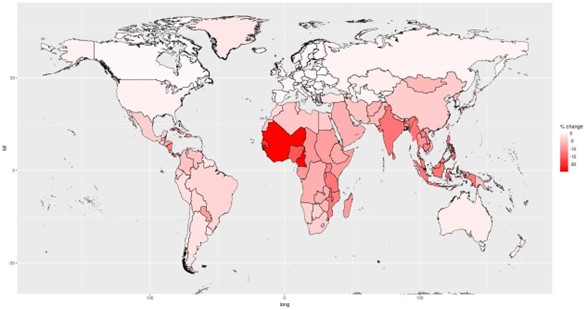Biosecurity risk from changes in climate, trade and pest and disease pathways
CEBRA is developing a model to predict how biosecurity threats will impact international trade under climate change. Predictions of this advanced model will help agencies better anticipate biosecurity risks and design interventions to mitigate them.
Climate change, increasing trade and globalisation is expected to dramatically raise the exposure of countries to pests and diseases that can have devastating economic, environmental and social impacts.

In this project we will integrate global trade and climate GTAP models (Global Trade Analysis Project — a model of the world economy consisting of interactions between consumers, producers, and government) into a trading partner biosecurity threat exposure model we developed previously. This will enable users to estimate and forecast changes in exposure of significant biosecurity threats that are linked to international trade under changing climate and international trade patterns. The enhanced model will help agencies better anticipate biosecurity risk, and thus, adapt border screening and post-border surveillance to mitigate the risk of biosecurity threats entering and establishing in Australia.
This project has three main components:
- Extending and improving ‘damage functions’ (used to estimate climate-driven economic losses) under various climate change scenarios, and how these will impact exports and imports
- Projecting future international trade patterns under different climate scenarios for more than 120 countries, including all of Australia’s trading partners
- Incorporate border screening data and threat climate suitability modelling to estimate country by commodity contamination rates hitting Australian borders, and then use these models to forecast temporal changes in threat exposure for Australia and 120 other countries.
CEBRA Project Leaders: Tom Kompas, James Camac